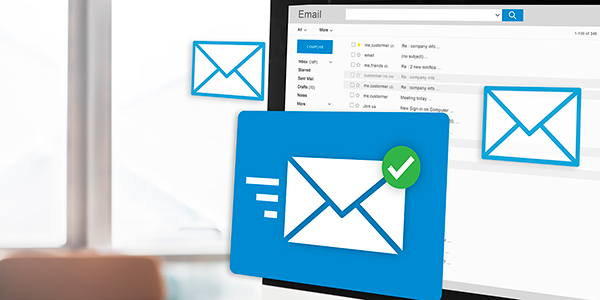content
Your paid clicks are expensive, retargeting keeps chasing the same people, and the email list grows in bursts—then stalls. Offers that win in ads don’t reappear in the inbox, attribution credits the last click while email does the heavy lifting, and budget reviews devolve into channel turf wars. The real issue isn’t CPC or open rates; it’s that email and PPC operate as separate islands. This article lays out how to make them one operating system that compounds results and reduces waste.
Treat email and PPC as a single growth engine
Think of ads as the accelerator and email as the cruise control. PPC creates qualified reach on demand; email turns fleeting attention into durable relationships and repeat revenue. When they run to one plan—shared audiences, shared offers, shared measurement—you get lower blended CAC and more predictable LTV, not two parallel reports fighting over credit.
Use paid media to build the right list, not just clicks
A common constraint in email is list quality and scale. Solve it upstream with intent-led campaigns in PPC. Drive people to focused landing pages that trade immediate value for permission: a concise guide, a price quote, early access, or a limited-time code. The goal isn’t a one-off click; it’s a permissioned contact you can nurture over time.
Two guardrails matter. First, clarity: state what subscribers get and how often. Second, compliance: collect consent that stands up to US and EU expectations. Done right, you retain value even when the visitor isn’t ready to buy today.

Turn inbox signals into paid targeting advantages
Your email program already knows who clicks, who buys, and who goes cold. Feed that intelligence back into PPC. Sync audiences from your ESP/CRM to Google Ads and Meta: recent buyers, high-intent engagers, lapsed customers. Use them to build lookalikes, to exclude current customers from cold prospecting, and to tailor bids and frequency for warm segments.
Two practical payoffs: budgets shift toward people with higher probability to act, and you stop paying repeatedly for users email can convert at near-zero marginal cost.
Keep the story consistent from ad to inbox
Confusion kills conversion. If an ad promises “20% off winter outerwear,” the first email should continue that exact thread: the same headline logic, the same hero product, the same call to action. If an ad offers a guide, the very first email delivers that guide—no detours. Visual and message continuity builds trust, reduces bounce, and shortens the path to the next action.

Build a cross-channel testing loop
Both channels are test-driven. Make them teach each other. Winning ad headlines become subject lines; high-performing email CTAs migrate into ad copy; hero images that lift click-through in email get a paid placement trial. Keep tests single-variable and timeboxed. Define the success metric upfront (click rate, conversion rate, revenue per send, cost per incremental conversion) and the minimum sample you need before you decide.
Install automations that compound results
Automation is where compounding starts. A resilient backbone looks like this:
-
Welcome and onboarding that exchange value immediately, capture interests, and set expectations for cadence.
-
Browse and cart recovery with sensible delays and dynamic content.
-
Post-purchase journeys for reviews, accessories, and easy reorders.
-
Win-back flows that escalate from helpful nudges to decisive offers.
Each flow reduces the need for aggressive remarketing and supplies fresh signals to your ad platforms: who is hot, who is cooling, and who should be suppressed.
Measure what actually moves revenue
Channel-by-channel dashboards hide the truth. Replace the last-click tunnel vision with a blended view: track conversions that follow both ad clicks and ad views, map email-assisted sales, and run simple holdouts or geo-splits when you can. Anchor on metrics that reflect business reality: blended CAC, revenue per send, repeat purchase rate, and revenue per 1,000 paid impressions. When you measure the system, you fund what truly adds lift—not what merely grabs credit.
Spend less in PPC by letting email do its job
Two levers deliver fast savings. First, exclusions: remove active customers and high-intent subscribers from cold prospecting so you don’t buy the same user twice. Second, pressure management: bid and frequency-cap more tightly for warm segments already engaged in email. For longer consideration cycles, let email carry education and proof, while paid media paces outreach to avoid fatigue.

A 6–12 month roadmap for the US and Europe
- Phase 1 (months 0–3): clean the pipes. Standardize consent and naming, enable list syncs to Google Ads and Meta, launch core automations, and ship a minimum measurement pack that merges paid and email results. Run intent-led PPC to grow qualified subscribers.
- Phase 2 (months 4–6): scale what proves incremental. Promote cross-channel winners into evergreen creatives, expand lookalikes from your best customers, add structured exclusions in all prospecting campaigns, and refine email segmentation beyond “new vs returning.”
- Phase 3 (months 7–12): optimize for margin. Introduce contribution-margin targets, align PPC bidding with predicted LTV cohorts from email, and formalize quarterly holdouts to validate real lift. Continue to retire audiences and offers that stall.
Roles and operating rhythm
Make ownership explicit. One owner keeps list hygiene and syncs segments. One owns offer mapping across channels. One safeguards sender reputation by watching complaints and suppressions. Agree on a weekly cadence: review placements and audiences in PPC, review performance by email flow and segment, then align changes so both channels move together.
Common pitfalls to avoid
Paying for traffic you could convert cheaply via inbox. Judging success by last click and ignoring view-through and assisted conversions. Running the same offers for months until lists fatigue and CPCs rise. All three problems vanish when email and PPC share a plan, a test backlog, and a common scoreboard.
Weekly checklist
-
Refresh exclusion and inclusion audiences across ESP, Google Ads, and Meta.
-
Compare creative winners and port them cross-channel.
-
Shift spend toward segments with verified incremental lift; suppress those email can close on its own.
-
Inspect frequency and recency to prevent fatigue in both paid and email.
Conclusion
Email and PPC are not rival budgets. When they share data, offers, and goals, your paid traffic becomes cheaper to monetize and your email becomes richer in intent. The result is lower acquisition cost, higher lifetime value, and a calmer forecast—because the system learns from every touch, not just the last one.
Work with ADV Advantage
If you want your email and PPC to operate as one engine, speak with ADV Advantage. Since 2011 we have designed custom, data-driven programs that turn traffic into revenue across the US and Europe. We build the strategy, automate the flows, sync audiences, and measure real lift—so every dollar or euro pulls its weight.
Subscribe to our newsletter



